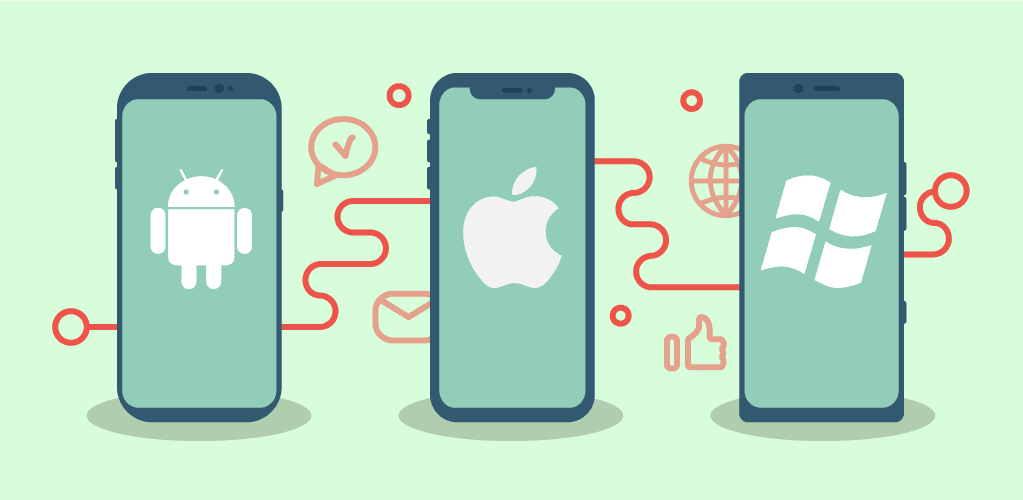In the dynamic landscape of mobile application development, choosing the right approach is crucial for achieving optimal performance, user engagement, and market success. One prevalent method in this domain is native app development, which offers a range of advantages along with certain limitations. This article explores the intricacies of native app development, providing a detailed analysis of its pros and cons of native app development.
What Are Native Apps?
Native apps are software applications specifically designed and developed for a particular platform or device. Unlike web apps or hybrid apps, native apps are built using platform-specific programming languages, APIs, and tools provided by the operating system.
For example, iOS apps are typically developed using Swift or Objective-C, while Android apps are created using Java or Kotlin.
Pros and Cons of Native App Development
Native app development has emerged as a prominent approach in mobile application development, offering distinct advantages and posing specific challenges. In this section, we will delve into the Pros and Cons of native app development in detail.
Pros of Native App Development
High Speed and Performance:
Native apps are renowned for their exceptional speed and performance. Unlike web or hybrid apps, which rely on web technologies and frameworks, native apps are optimized for their specific platform. This optimization allows them to leverage the device’s hardware and software capabilities, resulting in smoother animations, faster loading times, and overall better responsiveness.
Using platform-specific optimizations and APIs, native apps can deliver a superior user experience critical for engaging and retaining users.
Better Integration with Hardware:
One of the critical advantages of native apps is their Smooth integration with the device’s hardware features. Developers can easily access and utilize functionalities such as the camera, GPS, accelerometer, and microphone. It enables the creation of feature-rich and innovative applications that use the device’s capabilities.
For example, a native camera app can offer advanced features such as:
- manual controls and real-time image processing
- providing users with a more immersive and satisfying experience
Security:
Native apps often benefit from robust security features provided by the platform. These security features include data encryption, secure authentication methods, and app sandboxing. By leveraging these built-in security measures, native apps can mitigate security risks and vulnerabilities, safeguarding user data and privacy.
This is particularly important for apps that handle sensitive information, such as personal or financial data, where security is a top priority for both users and developers.
User Experience:
Native app development gives developers greater control over the user interface and overall user experience. They can design apps that feel native to the platform, adhering to platform-specific design guidelines and offering intuitive navigation.
This results in a more smooth and enjoyable user experience, crucial for user engagement and retention. By providing a consistent and familiar interface, native apps can enhance usability and reduce friction, leading to higher user satisfaction and loyalty.
Easier Testing:
Testing native apps is generally more straightforward compared to cross-platform or hybrid apps. Since native apps are built for specific platforms, developers can focus their testing efforts on a narrower set of devices and configurations. This leads to more efficient bug detection and resolution, ultimately resulting in higher quality and more reliable apps.
Additionally, native app testing tools and frameworks provided by the platform can streamline the testing process, enabling developers to identify and address issues more effectively.
No Internet Access Required:
Native apps can offer functionality even in offline mode, allowing users to access certain features and content without an active internet connection. This offline capability is particularly beneficial for apps that rely on local data storage or offline access to resources.
For example, a native e-book reader app can allow users to download and read books offline without requiring an internet connection. This enhances the app’s usability and ensures that users can still interact with it, even when internet connectivity is limited or unavailable.
App Store Presence:
Being available on popular app stores such as the Apple App Store and Google Play Store provides native apps with greater visibility and credibility. Users tend to trust apps distributed through official app stores, which can lead to higher download rates and increased user adoption.
Moreover, app stores provide a centralized platform for app discovery, making it easier for users to find and install native apps. By leveraging the reach and reputation of app stores, developers can effectively promote their apps and reach a wider audience of potential users.
Parallel Development:
With native app development, developers can pursue parallel development for different platforms. By maintaining separate codebases for iOS and Android, for example, development teams can work simultaneously on both app versions. This reduces time-to-market and enables faster iterations and updates, ultimately allowing developers to deliver a consistent, high-quality experience across multiple platforms.
Additionally, native development tools and frameworks provided by the platform can facilitate cross-platform development, enabling developers to share code and resources between different app versions, further accelerating the development process.
Cross Platform App Development Frameworks
Cons of Native App Development
Development Time and Cost:
Building native apps for multiple platforms can be time-consuming and costly. Since developers need to create separate codebases and tailor the app for each platform’s requirements, development efforts are multiplied. This leads to higher expenses and longer timeframes, which may only be feasible for some projects, especially those with limited resources or tight deadlines.
Additionally, native app development requires specialized skills and expertise, which may necessitate hiring or training developers with experience in specific programming languages and development tools.
Updates and Maintenance:
Managing updates and maintenance for multiple versions of the app across different platforms can pose logistical challenges. Each platform may have its own release cycle and update process, requiring coordination and resources to ensure consistency and timely updates. This ongoing maintenance can be resource-intensive and may require dedicated personnel or teams to handle it effectively.
Moreover, platform updates and changes may necessitate updates to the app to ensure compatibility and compliance with new requirements, further adding to the maintenance burden.
Limited Code Reusability:
Unlike cross-platform development frameworks, native app development offers less code reusability. Since separate codebases must be maintained for each platform, developers may need to duplicate efforts and rewrite code for non-platform-agnostic features. This leads to inefficiencies and increased complexity, especially for large and complex applications with extensive feature sets.
Additionally, maintaining multiple codebases increases the risk of inconsistencies and divergence between different versions of the app, which can complicate development and hinder collaboration among team members.
App Size:
Native apps tend to have larger file sizes than web or hybrid apps. This can be a concern for users with limited storage space on their devices, especially in regions with limited internet connectivity, and downloading large apps may incur additional costs or inconvenience.
Moreover, larger app sizes can result in longer download times and increased data usage, particularly for users on metered or limited data plans. This can deter users from downloading or updating the app, reducing adoption and engagement.
Final Verdict
In conclusion, native app development offers numerous advantages, such as high performance, flawless hardware integration, and enhanced security. However, it has its share of drawbacks, including higher development costs, longer update cycles, and limited code reusability. Ultimately, the choice between native and other development approaches depends on the specific requirements and priorities of the project.
Boost your business with cutting-edge React Native apps. Contact our Canadian agency for expert mobile app development services today.





